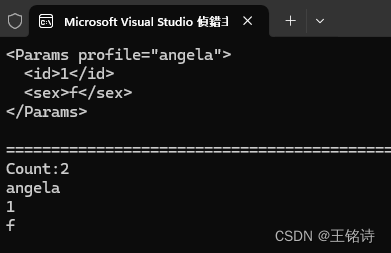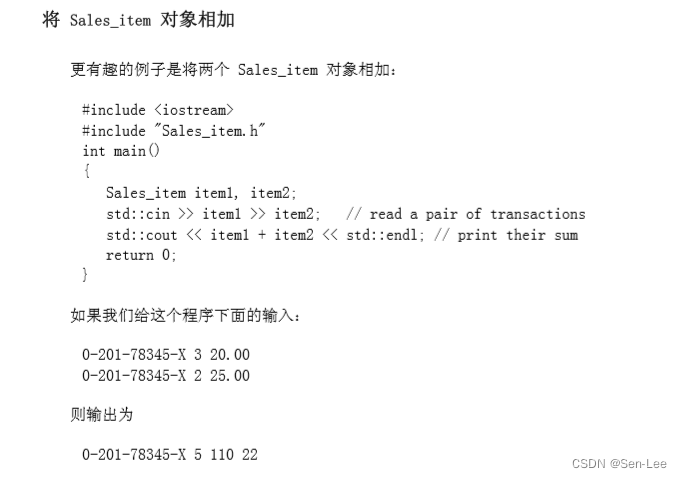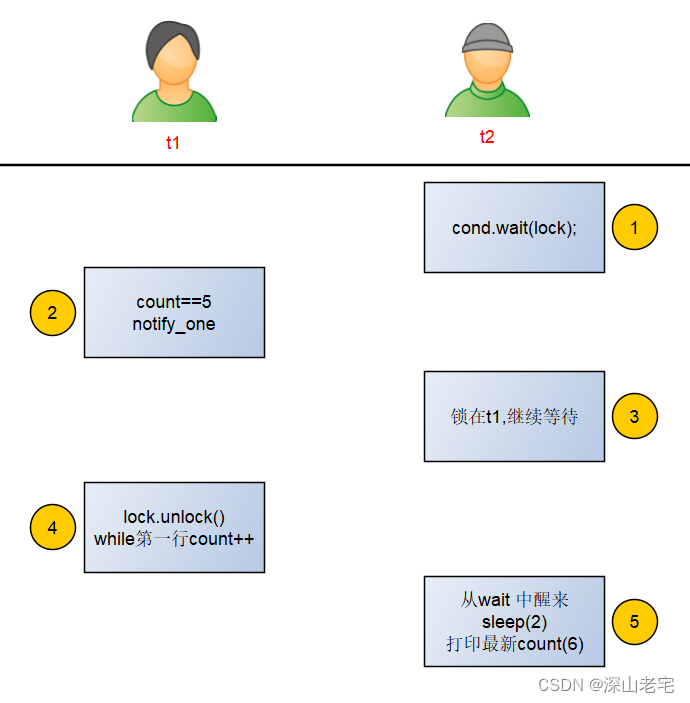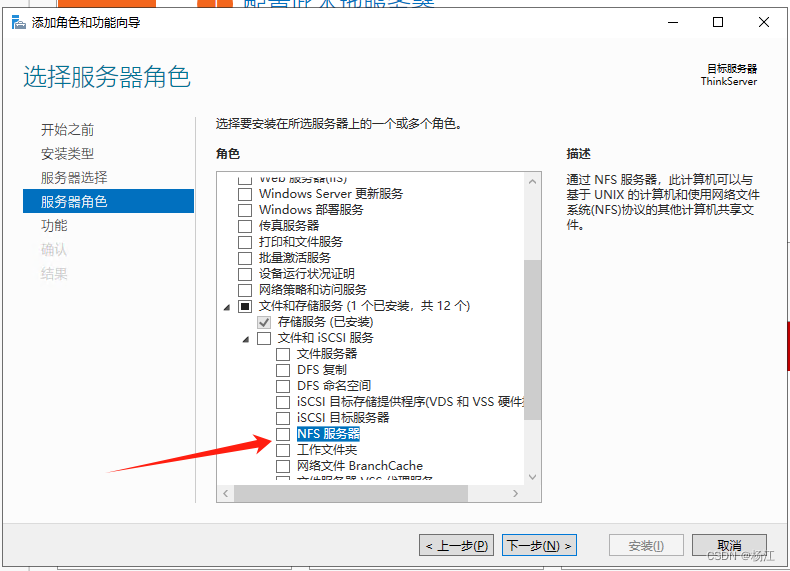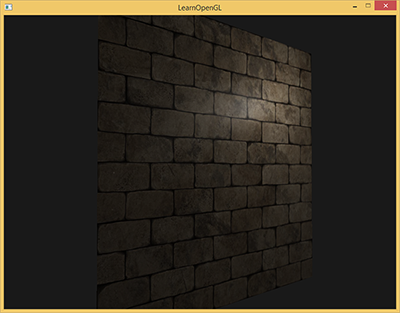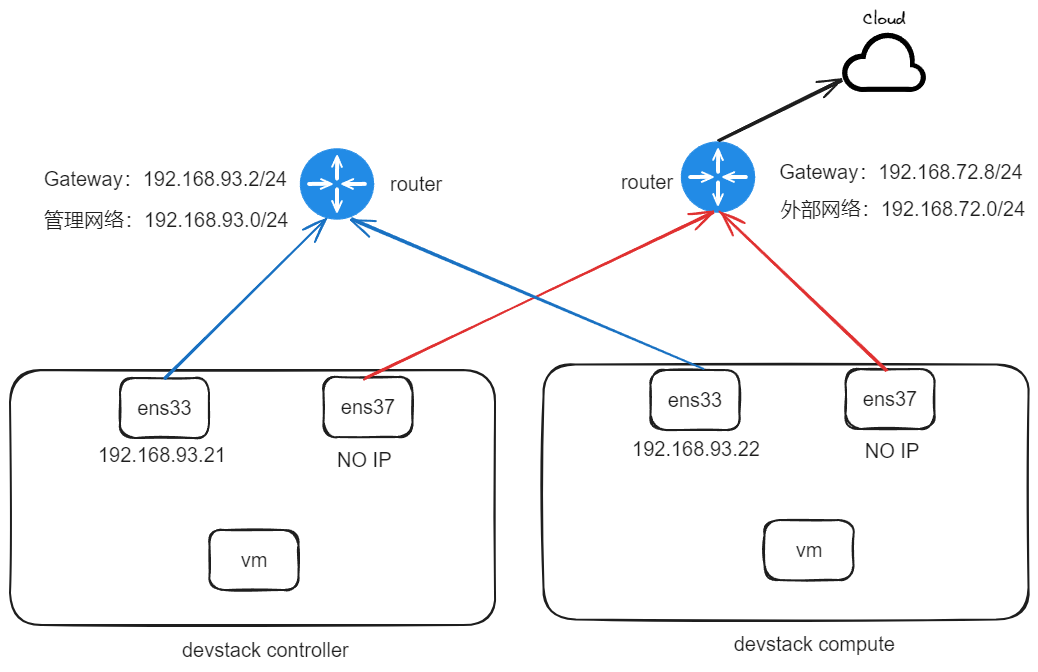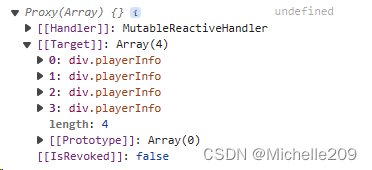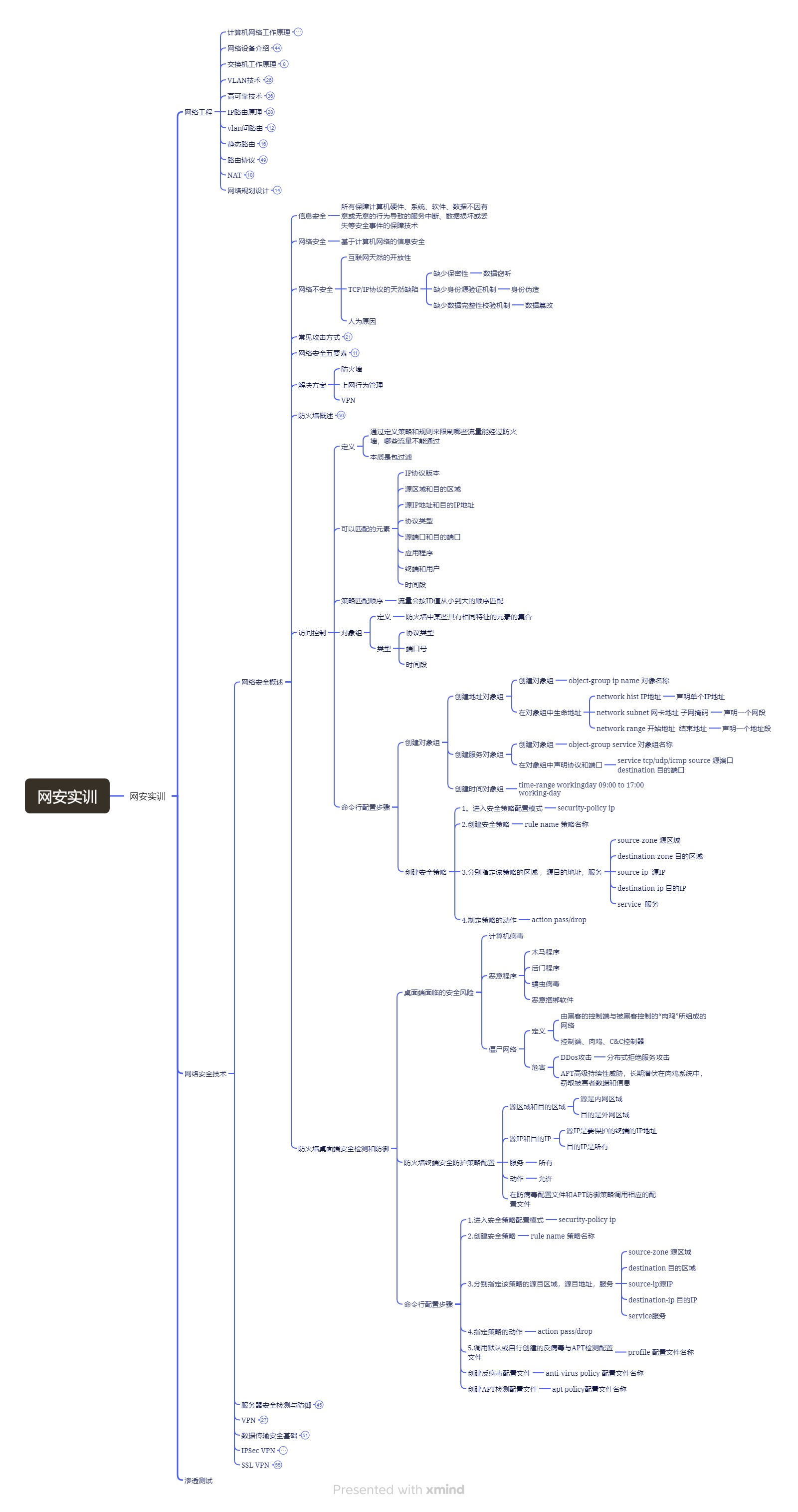#include<iostream>
using namespace std;
//抽象类
//抽象cpu类
class CPU
{
public:
virtual void calcuate()=0;
};
//抽象显卡类
class VideoCard
{
public:
virtual void display()=0;
};
//抽象内存条类
class Memory
{
public:
virtual void storage()=0;
};
//电脑类
class Computer
{
public:
//构造函数
Computer(CPU *cpu, VideoCard *vc, Memory *mem)
{
m_cpu = cpu;
m_vc = vc;
m_mem = mem;
}
//什么行为,提供变量工作的函数
void work()
{
m_cpu->calcuate();
m_vc->display();
m_mem->storage();
}
~Computer()
{
if(m_cpu!=NULL)
{
delete m_cpu;
m_cpu =NULL;
}
if(m_vc!=NULL)
{
delete m_vc;
m_vc =NULL;
}
if(m_mem!=NULL)
{
delete m_mem;
m_mem =NULL;
}
}
private:
// 这个类先写private
CPU *m_cpu; //定义一个CPU的指针
VideoCard *m_vc;
Memory *m_mem;
};
//具体厂商
//intel厂商
class IntelCPU : public CPU
{
public:
virtual void calcuate()
{
cout<<"Intel的CPU开始计算了!"<<endl;
}
};
class IntelVideoCard: public VideoCard
{
public:
virtual void display()
{
cout<<"Intel的显卡开始计算了!"<<endl;
}
};
class IntelMemory: public Memory
{
public:
virtual void storage()
{
cout<<"Intel的存储开始计算了!"<<endl;
}
};
// lenovo
class LenovoCPU : public CPU
{
public:
virtual void calcuate()
{
cout<<"Intel的CPU开始计算了!"<<endl;
}
};
class LenovoVideoCard: public VideoCard
{
public:
virtual void display()
{
cout<<"Intel的显卡开始计算了!"<<endl;
}
};
class LenovoMemory: public Memory
{
public:
virtual void storage()
{
cout<<"Intel的存储开始计算了!"<<endl;
}
};
void test01()
{
//第一台电脑零件
//new返回的是同类型的指针
//int *p= new int 或int[10]
CPU *IntelCpu = new IntelCPU;
VideoCard * IntelCard = new IntelVideoCard;
Memory *IntelMem = new IntelMemory;
//创建第一台电脑
Computer * computer1= new Computer(IntelCpu,IntelCard,IntelMem);
computer1->work();
delete computer1;
//method1 继续释放new的
// 放在析构中
// delete IntelCPU;
// delete IntelCard;
// delete IntelMem;
//创建第二台
cout<<"创建第二胎"<<endl;
CPU *LenovoCpu = new LenovoCPU;
VideoCard * LenovoCard = new LenovoVideoCard;
Memory *LenovoMem = new LenovoMemory;
//或者直接new
// Computer *computer2 = new Computer( new LenovoCPU,new LenovoVideoCard,new LenovoMemory);
Computer * computer2 = new Computer(LenovoCpu,LenovoCard,LenovoMem);
computer2->work();
delete computer2;
}
int main()
{
test01();
// system("pause");
return 0;
}


cpu还没给m_cpu时,
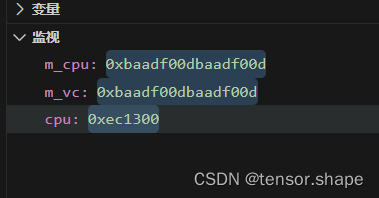
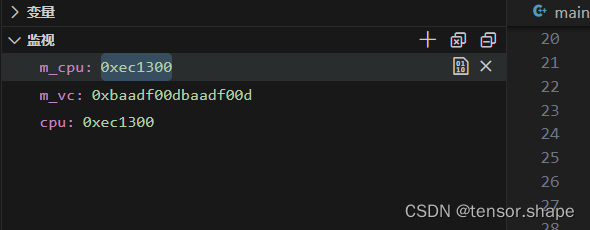


析构其它的new
二、
// #include<iostream>
// using namespace std;
// //抽象类
// //抽象cpu类
// class CPU
// {
// public:
// virtual void calcuate()=0;
// };
// //抽象显卡类
// class VideoCard
// {
// public:
// virtual void display()=0;
// };
// //抽象内存条类
// class Memory
// {
// public:
// virtual void storage()=0;
// };
// //电脑类
// class Computer
// {
// public:
// //构造函数
// Computer(CPU *cpu, VideoCard *vc, Memory *mem)
// {
// m_cpu = cpu;
// m_vc = vc;
// m_mem = mem;
// }
// //什么行为,提供变量工作的函数
// void work()
// {
// m_cpu->calcuate();
// m_vc->display();
// m_mem->storage();
// }
// ~Computer()
// {
// if(m_cpu!=NULL)
// {
// delete m_cpu;
// m_cpu =NULL;
// }
// if(m_vc!=NULL)
// {
// delete m_vc;
// m_vc =NULL;
// }
// if(m_mem!=NULL)
// {
// delete m_mem;
// m_mem =NULL;
// }
// }
// private:
// // 这个类先写private
// CPU *m_cpu; //定义一个CPU的指针
// VideoCard *m_vc;
// Memory *m_mem;
// };
// //具体厂商
// //intel厂商
// class IntelCPU : public CPU
// {
// public:
// virtual void calcuate()
// {
// cout<<"Intel的CPU开始计算了!"<<endl;
// }
// };
// class IntelVideoCard: public VideoCard
// {
// public:
// virtual void display()
// {
// cout<<"Intel的显卡开始计算了!"<<endl;
// }
// };
// class IntelMemory: public Memory
// {
// public:
// virtual void storage()
// {
// cout<<"Intel的存储开始计算了!"<<endl;
// }
// };
// // lenovo
// class LenovoCPU : public CPU
// {
// public:
// virtual void calcuate()
// {
// cout<<"Intel的CPU开始计算了!"<<endl;
// }
// };
// class LenovoVideoCard: public VideoCard
// {
// public:
// virtual void display()
// {
// cout<<"Intel的显卡开始计算了!"<<endl;
// }
// };
// class LenovoMemory: public Memory
// {
// public:
// virtual void storage()
// {
// cout<<"Intel的存储开始计算了!"<<endl;
// }
// };
// void test01()
// {
// //第一台电脑零件
// //new返回的是同类型的指针
// //int *p= new int 或int[10]
// CPU *IntelCpu = new IntelCPU;
// VideoCard * IntelCard = new IntelVideoCard;
// Memory *IntelMem = new IntelMemory;
// //创建第一台电脑
// Computer * computer1= new Computer(IntelCpu,IntelCard,IntelMem);
// computer1->work();
// delete computer1;
// //method1 继续释放new的
// // 放在析构中
// // delete IntelCPU;
// // delete IntelCard;
// // delete IntelMem;
// //创建第二台
// cout<<"创建第二胎"<<endl;
// CPU *LenovoCpu = new LenovoCPU;
// VideoCard * LenovoCard = new LenovoVideoCard;
// Memory *LenovoMem = new LenovoMemory;
// //或者直接new
// // Computer *computer2 = new Computer( new LenovoCPU,new LenovoVideoCard,new LenovoMemory);
// Computer * computer2 = new Computer(LenovoCpu,LenovoCard,LenovoMem);
// computer2->work();
// delete computer2;
// }
// int main()
// {
// test01();
// // system("pause");
// return 0;
// }
#include<iostream>
using namespace std;
class base
{
public:
// 无参构造
base()
{
cout<<"父类构造"<<endl;
}
~base()
{
cout<<"父类析构"<<endl;
}
};
class son :public base
{
public:
son()
{
cout<<"儿子构造"<<endl;
}
~son()
{
cout<<"儿子析构"<<endl;
}
};
int main()
{
son x;
return 0;
}
输出结果:
父类构造
儿子构造
儿子析构
父类析构
debug信息
Breakpoint 1, main () at /mnt/workspace/test/test.cpp:208
208 {
(gdb) s
209 son x;
(gdb)
son::son (this=0x7ffea3799fe7) at /mnt/workspace/test/test.cpp:193
193 {
(gdb)
base::base (this=0x7ffea3799fe7) at /mnt/workspace/test/test.cpp:179
179 cout<<"父类构造"<<endl;
(gdb)
父类构造
180 }
(gdb)
son::son (this=0x7ffea3799fe7) at /mnt/workspace/test/test.cpp:194
194 cout<<"儿子构造"<<endl;
(gdb)
儿子构造
195 }
(gdb)
main () at /mnt/workspace/test/test.cpp:210
210 return 0;
(gdb)
211 }
(gdb)
son::~son (this=0x7ffea3799fe7, __in_chrg=<optimized out>) at /mnt/workspace/test/test.cpp:199
199 cout<<"儿子析构"<<endl;
(gdb)
儿子析构
201 }
(gdb)
base::~base (this=0x7ffea3799fe7, __in_chrg=<optimized out>) at /mnt/workspace/test/test.cpp:184
184 cout<<"父类析构"<<endl;
(gdb)
父类析构
186 }
(gdb)
#include
using namespace std;
class base
{
public:
virtual void sample()=0;
};
class son :public base
{
public:
virtual void sample()
{
cout<<“快得很”<<endl;
}
};
int main()
{
son x;
//调用方法才有输出
x.sample();
son *p = new son;
p->sample();
delete p;
return 0;
}
输出两次,
快得很
快得很
3)
#include<iostream>
using namespace std;
class base
{
public:
base(int &m,int &n)
{
m1=m;
n1=n;
}
void prit()
{
cout<<"m:"<<m1<<"n:"<<n1<<endl;
}
// virtual void sample()=0;
void fun(){}
private:
int m1;
int n1;
};
class son :public base
{
public:
virtual void sample()
{
cout<<"快得很"<<endl;
}
};
int main()
{
// son x;
// //调用方法才有输出
// x.sample();
int c=10;
int b =20;
//抽象类不能直接直接实例化
base a(c,b);
a.prit();
抽象类不能直接直接实例化,去掉虚幻书,加上fun的一个空定义

